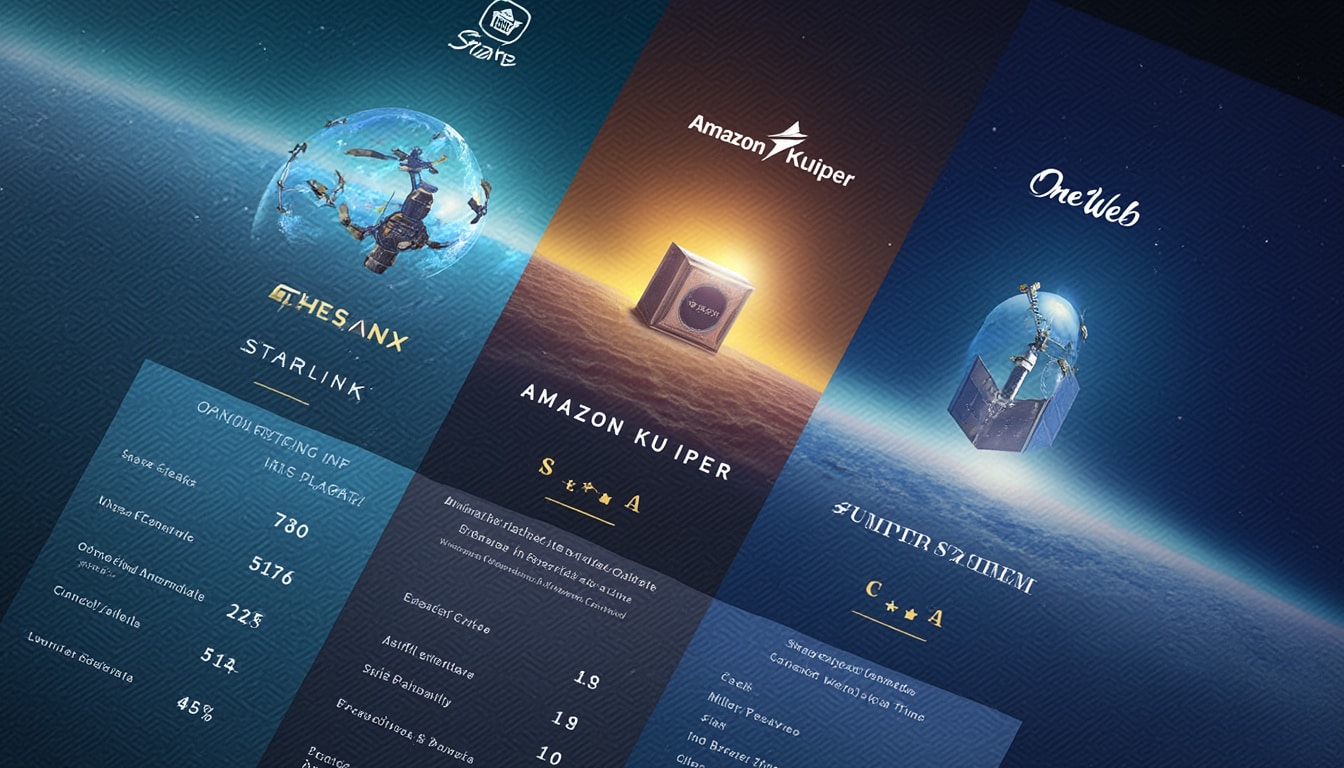Recent developments in satellite internet have sparked significant interest among consumers and tech enthusiasts alike. SpaceX, the renowned aerospace manufacturer and satellite communications company founded by Elon Musk, is at the forefront of this transformation. A standout initiative is their complimentary Starlink dish program, set to bring high-speed internet access to numerous US households, particularly in rural areas. This program aims to alleviate connectivity issues, enhance communication capabilities, and provide users with reliable internet access. In tandem with this initiative, the satellite internet landscape is rapidly evolving, with competitors like Amazon Kuiper, OneWeb, and Telesat also making strides to establish themselves. This article delves into the implications of SpaceX’s Starlink program, its operational intricacies, and how it positions SpaceX within the larger framework of satellite internet services.
The Emergence of Starlink
The inception of Starlink revolutionized how internet services are provided, particularly for remote regions that often struggle with traditional broadband access. As part of SpaceX’s broader mission to create a multi-planetary civilization, Starlink serves a dual purpose: generating revenue to fund Mars exploration and addressing terrestrial connectivity problems. The vast network of low Earth orbit (LEO) satellites enables faster data transmission compared to conventional geostationary satellites, significantly improving latency issues users have faced historically.

How Starlink Works
Starlink operates by deploying thousands of small satellites into low Earth orbit. These satellites communicate with ground stations and user terminals, called “dishes,” placed at customers’ locations. The technology behind the Starlink system allows multiple satellites to connect with a single user dish, enabling seamless internet access. By utilizing phased array antennas and advanced signal processing techniques, Starlink significantly minimizes latency, making it comparable to traditional urban broadband services.
To facilitate expansion, SpaceX has been particularly aggressive in the launch of its satellites. Each launch can deploy dozens of satellites, rapidly increasing coverage and service capacity across vast geographic areas. Not only does this increase payoffs by expanding customer bases, but it also showcases SpaceX’s rocket launch capabilities, particularly with the Falcon 9 launch vehicle.
The Complimentary Dish Program
In an ambitious move to lower barriers for users, SpaceX recently introduced a complimentary Starlink dish program for eligible customers in the US. This initiative can significantly impact households lacking stable internet access. Eligible participants can obtain the dish free of charge when they sign up for an initial service commitment. Reports suggest that this program may primarily target rural and underserved areas, allowing millions to connect who have long been disconnected.
Moreover, the complimentary dish initiative aligns with various state and federal programs designed to expand broadband access. Collaborations with governmental organizations might help tackle digital divides exacerbated by socioeconomic factors. The objective is to ensure that no household is left without connectivity, especially in an increasingly digital world where access to information and educational resources is critical.
Competitive Landscape of Satellite Internet
While Starlink is at the forefront of satellite internet technology, it is not alone in this evolving marketplace. Companies such as Amazon Kuiper, OneWeb, Telesat, and others have started investing heavily in developing similar LEO satellite networks to provide robust internet services worldwide. This burgeoning competition raises questions about pricing strategies, service offerings, and the scalability of satellite technology.
Amazon Kuiper and OneWeb
Amazon’s Kuiper project aims to place thousands of satellites into orbit, establishing a formidable competitor in the broadband space. Their approach, while still in its developmental stages, aligns with SpaceX’s strategy of enhancing internet accessibility. Kuiper’s partnerships and funding indicate a serious commitment to the satellite internet market. Moreover, Amazon’s existing infrastructure and resources could provide a significant advantage in quickly reaching market readiness.
OneWeb, another key player, has already launched several satellites and aims to provide global internet coverage as well. Its approach includes collaborations with mobile operators to integrate connectivity solutions across different platforms. However, OneWeb has faced challenges due to financial hurdles, forcing them into bankruptcy in the past.
The Challenge of Seizing Market Share
The entry of established companies into the satellite internet space generates pressure for SpaceX to maintain its dominant position. They must continue innovating to enhance service reliability and reduce costs. Coupled with financial aspirations, space-based firms are navigating challenges like regulatory approvals, launch schedules, and international competition. Notably, companies like Blue Origin are progressively popularizing the idea of space tourism while also investing in satellite communications, blurring the lines between industries.

With varied approaches towards market penetration, an ongoing strategy of high-velocity launches remains critical for all players. The adaptability of their platforms will determine which company can better respond to consumer needs, particularly in underserved areas. Customer satisfaction and service reliability remain crucial for fostering brand loyalty.
Expanding Into New Frontiers
Beyond just enhancing commercial internet access, SpaceX’s expansion into various domains signifies its willingness to redefine connectivity standards. Projects in collaboration with entities like NASA and other governmental organizations demonstrate this ambition. NASA’s interest in integrating Starlink’s services into their missions illustrates the incredible potential for satellite-based communications in space exploration.
Partnerships and Collaborations
SpaceX’s collaborations extend beyond mere internet provision. Projects aimed at enhancing connectivity on Mars set the stage for future interplanetary communications, showcasing the duality of their service application. Recently, SpaceX has been involved in tests to integrate Starlink with Artemis missions, as NASA prepares for ambitious lunar exploration projects.
The application of Starlink technology is not just confined to Earth but stretches to remote research stations and maritime operations, where conventional internet connections are limited. These collaborations enhance the overall viability of satellite systems in diverse environments, solidifying SpaceX’s standing as a pioneer in the space sector.
Impact on the Future of Connectivity
The innovations spearheaded by SpaceX and the introduction of the complimentary Starlink dish program signify the potential for layers of connectivity improvement in society. With significantly reduced initial costs, more people could afford satellite internet, which was previously thought out of reach for many. Moreover, increased access fosters a digitally inclusive society where individuals can leverage online tools for learning, entrepreneurship, and work.
Additionally, as the program rolls out, consumer feedback will play a vital role in shaping future iterations of service offerings. SpaceX’s proactive approach to customer service and engagement will determine user trust and establish crucial relationships. Through careful prioritization of quality service, adaptive strategies, and collaboration with other tech companies, SpaceX is poised to thrive in a highly competitive market.
Future Prospects
The ongoing evolution in satellite internet, specifically SpaceX’s initiatives with Starlink, presents numerous opportunities for the future. The nexus between competitive pricing, technological advancements, and improved connectivity solutions alters the fabric of how communities interact and grow. As more households gain access to reliable internet, social dynamics will naturally shift, enabling remote learning and improved business operations.
As the boundaries of space exploration expand along with terrestrial internet access, SpaceX contributes to a futuristic vision of connectivity that few previously imagined. This trajectory highlights the extraordinary potential for technological progress to reshape society fundamentally.




Leave a Reply